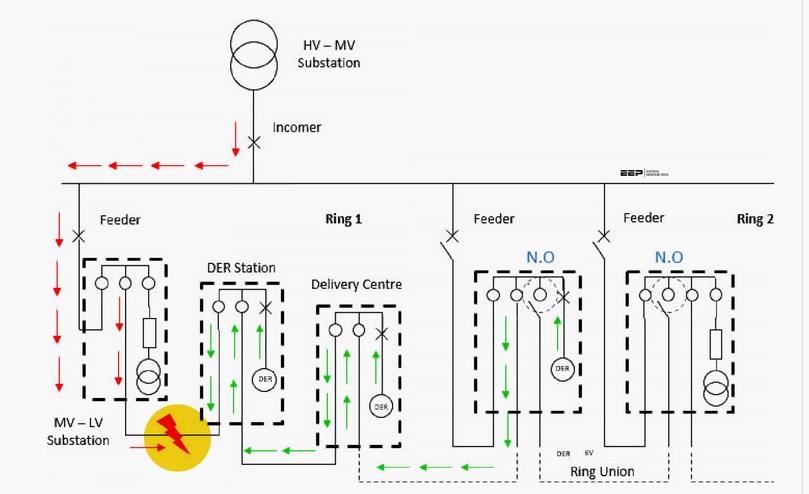ANSI 21 FL Protection
The FL function is described through ANSI 21FL, from the normative ANSI C37.2. This function is defined too through IEC in the normative 60617 as FLOC [68]. The function ANSI 21FL is present normally in some protection divice for the electrical network.
It is important remark that the function ANSI 21FL from come ANSI 21, which is the distance fault function according to ANSI C37.2. The protection distance 21 help to locate a fault within pre-set distance from its location in a long a transmission line or power cable. In HV system, the ANSI 21 protection considers la resistance and reactance by kilometer in the line conforming a total impedance where the impedance is is clearly known by the operator of teh network.
How 21FL works:
When a fault occurs on a protected section of a distribution feeder, values are generated for fault magnitude and impedances. These readings are provided to the algorithm in combination with the known parameters of the feeder under protection, such as the positive and zero sequence resistance and reactance of the line.
When the calculations are completed by the relay, it returns estimates for six parameters:
The distance to fault
The fault impedance magnitude
The fault impedance angle
The fault loop impedance magnitude
The measured Positive Sequence Reactance from the Relay to the Fault location
Fault Loop Impedance Angle
The IEDs use the voltage and current measures in real time and compare with the impedance of the line in order to identify the section of the fault. Through the algorithms of this protection, it is possible to calculate the fault distance to the fault.
Several manufacturer have implemented the function 21FL in their IED’s. The cost the this function in an IED for HV/MV subtation outgoing has not a big impact, although in other kind the devices such as FPI or Telecontrol system for MV/LV substation the cost difference will be significative.
When to use Fault Locator:
Fault locator is a useful tool for reducing outage duration and minimising line patrol work. There are some distribution applications for which it is ideally suited, but there are also some limitations to the algorithm that engineers should know.
Fault locator works best when:
The network under protection is radial
The network is effectively earthed
The fault magnitude is substantial
When the network has many spurs, or “tee-off” connections, there are multiple possible fault locations from the protection devices’ perspective that would meet the same distance to fault. While this may be helpful, reducing the number of fault sites down from a whole feeder to a few plausible locations, as the feeder complexity grows the ability to accurately locate the fault reduces.
The precision of the fault location is also subject to fault severity. Lower fault impedances generate more fault current values, assisting the accuracy of the fault location.
Fault Location with complex and non-radial distribution networks.
References:
2.- Webpage:https://www.nojapower.com.au/press/2021/understanding-fault-locator-ANSI-21-FL.html
